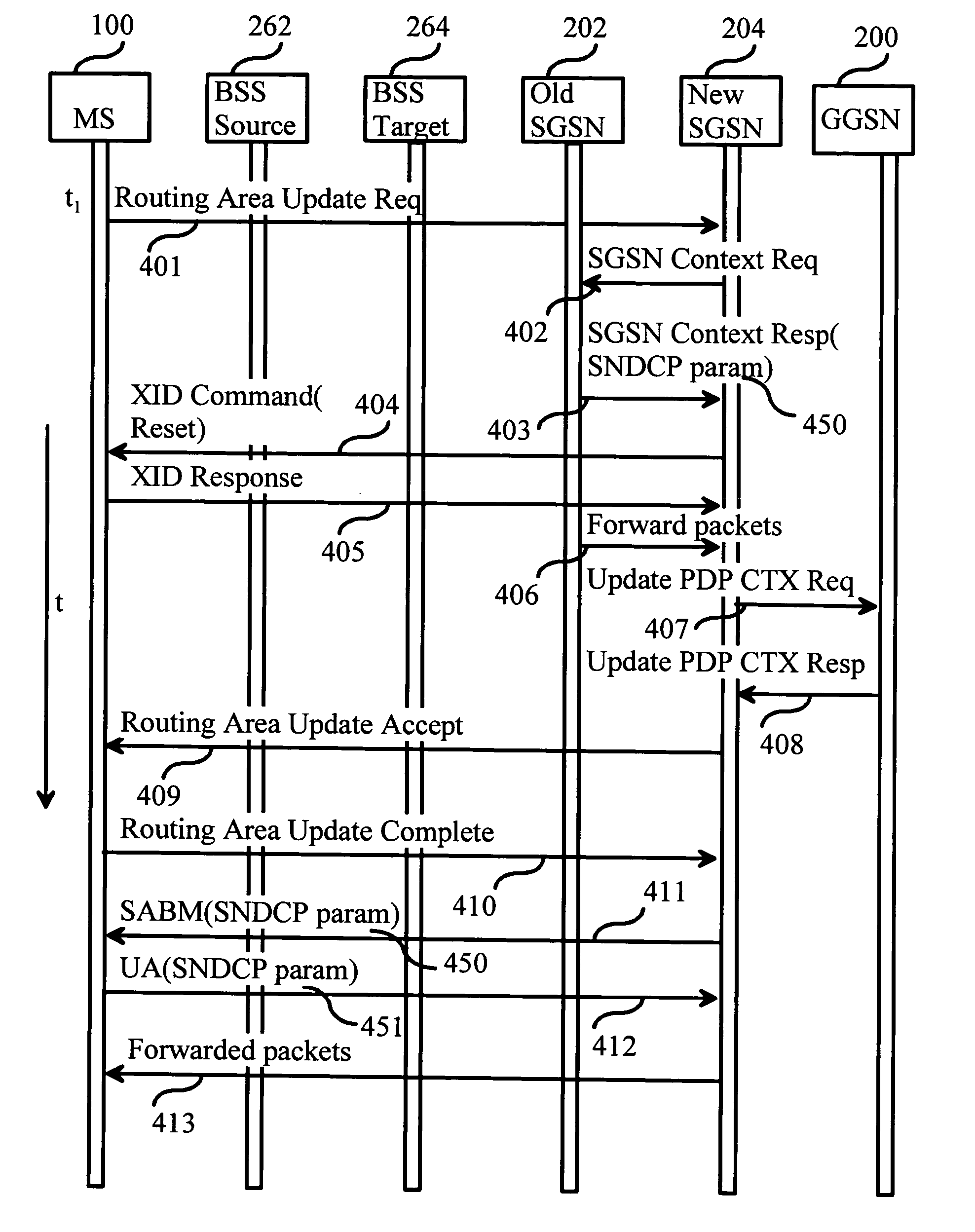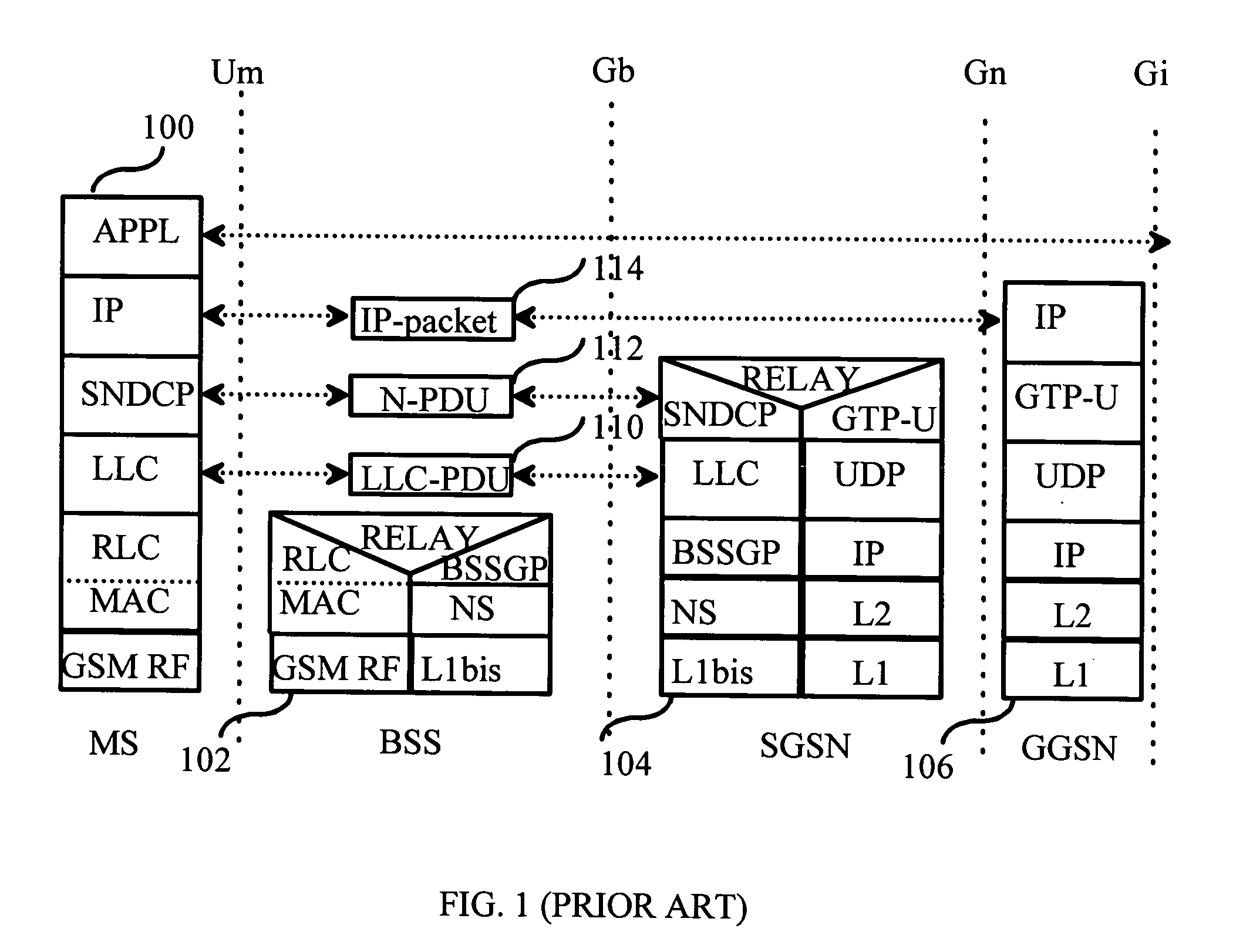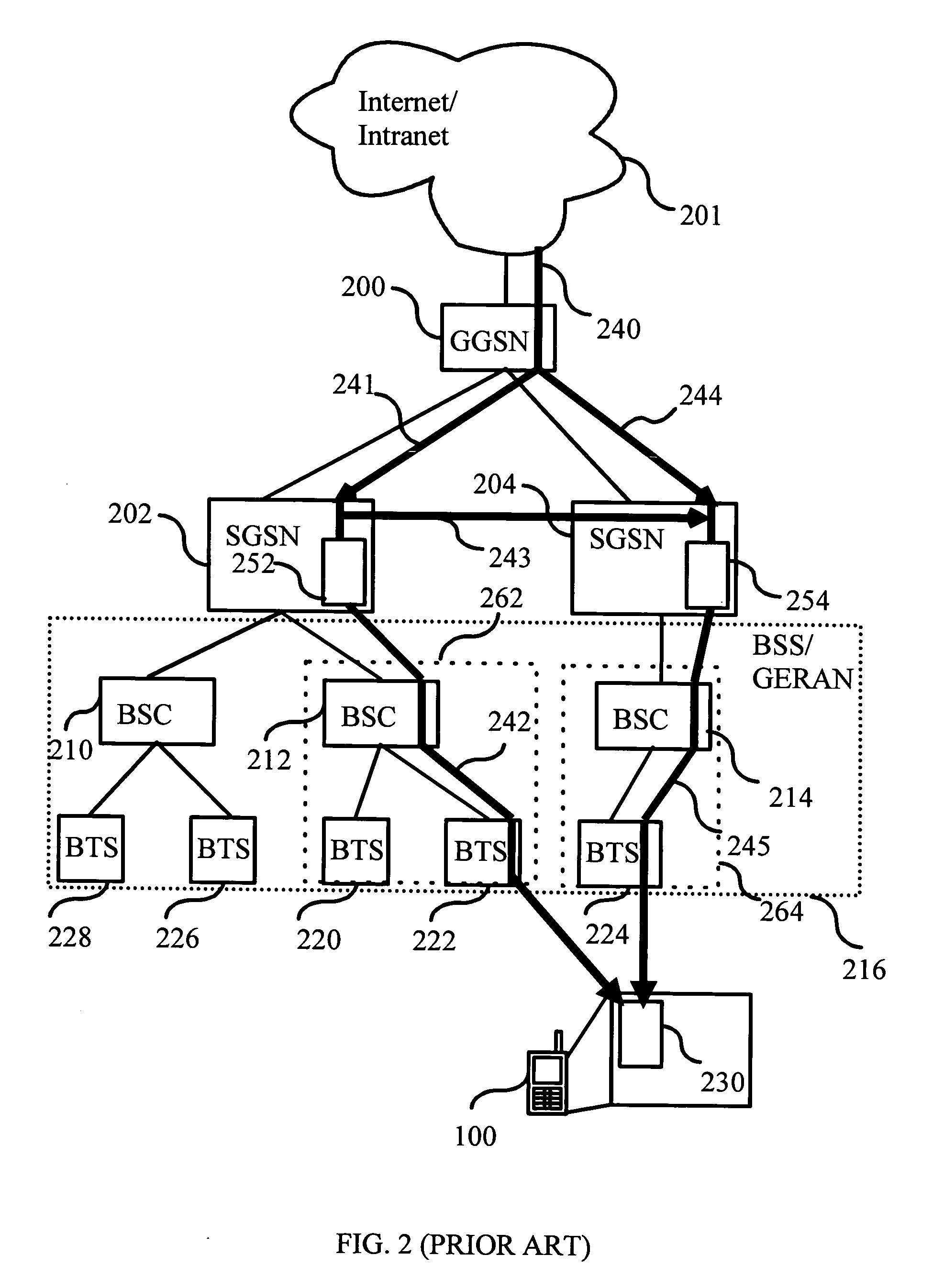Transferring compression parameters in a mobile communication system
- Summary
- Abstract
- Description
- Claims
- Application Information
AI Technical Summary
Benefits of technology
Problems solved by technology
Method used
Image
Examples
Embodiment Construction
[0049] Reference will now be made in detail to the embodiments of the present invention, examples of which are illustrated in the accompanying drawings.
[0050]FIG. 5 is a flow chart depicting one embodiment of a method for compression parameter transfer, which utilizes a routing area update signaling as illustrated in FIG. 4. The signaling is performed in the GPRS system architecture, which is illustrated in FIGS. 1 and 2. At step 500 a MS 100 waits for Routing Area (RA) update condition. RA update condition is fulfilled as MS 100 detects an event that indicates that it must start using a new cell (not shown). The new cell is within a new routing area, which is controlled by a new SGSN 204. MS 100 sends a Routing Area Update Request message to SGSN 204 as illustrated with arrow 401. Thereupon, the method continues at step 502.
[0051] At step 502 SGSN 204 sends an SGSN Context Request message illustrated with arrow 402 to SGSN 202 to get the mobility management and PDP contexts for M...
PUM
 Login to View More
Login to View More Abstract
Description
Claims
Application Information
 Login to View More
Login to View More - R&D
- Intellectual Property
- Life Sciences
- Materials
- Tech Scout
- Unparalleled Data Quality
- Higher Quality Content
- 60% Fewer Hallucinations
Browse by: Latest US Patents, China's latest patents, Technical Efficacy Thesaurus, Application Domain, Technology Topic, Popular Technical Reports.
© 2025 PatSnap. All rights reserved.Legal|Privacy policy|Modern Slavery Act Transparency Statement|Sitemap|About US| Contact US: help@patsnap.com



